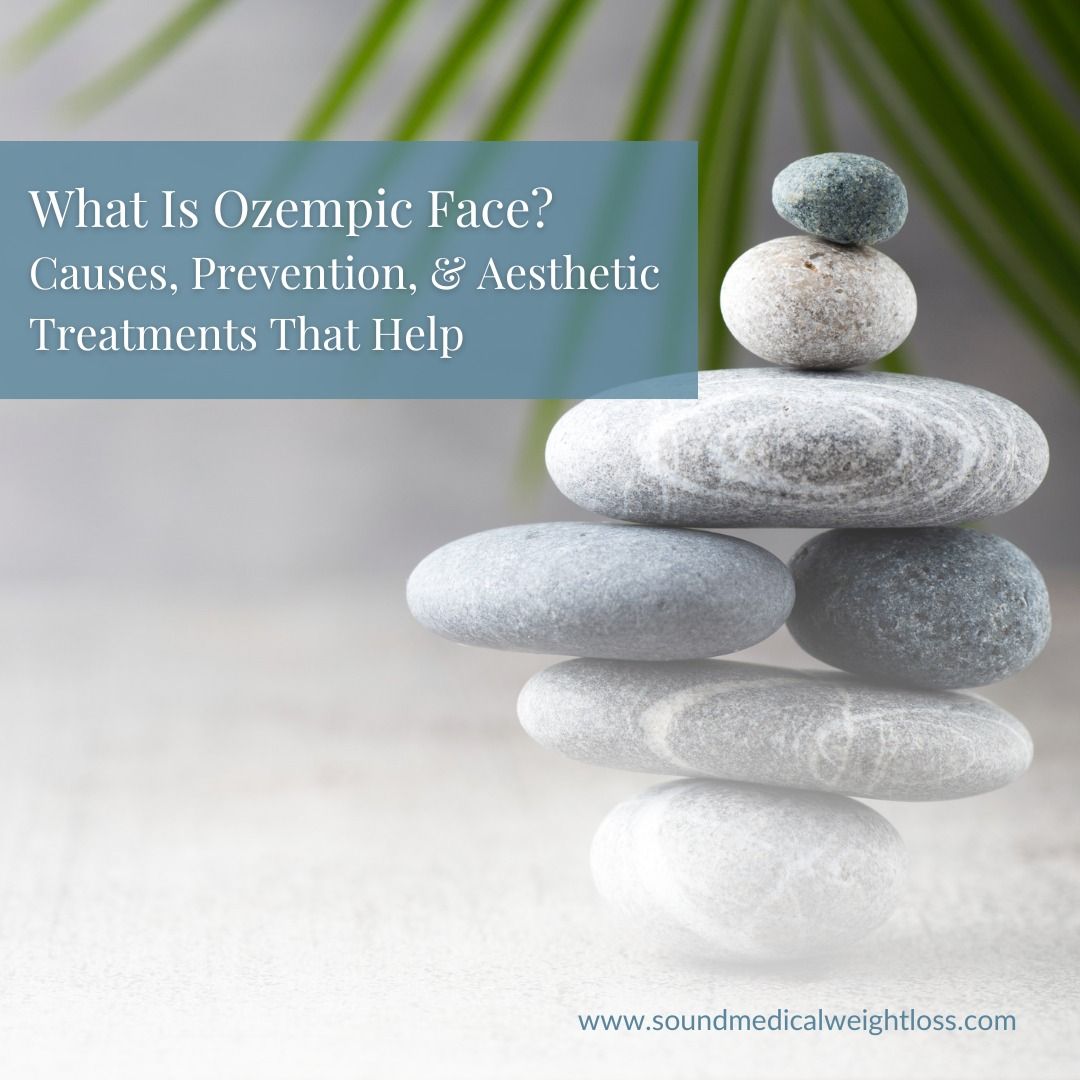

What Is Ozempic Face? Causes, Prevention, and Aesthetic Treatments That Help
With the growing popularity of GLP-1 weight loss medications like Ozempic® (semaglutide) and Wegovy®, a new conversation has emerged in both the medical and aesthetic world: the phenomenon of “Ozempic Face.” While these medications are highly effective for weight loss and blood sugar management, many patients are surprised by the unintended side effects — particularly the facial changes that come with rapid weight loss.
In this article, we’ll explain what Ozempic Face is, why it happens, how to prevent it, and which non-surgical aesthetic treatments can help reverse it.
What Is Ozempic Face?
“Ozempic Face” is a term used to describe the sagging, hollowed, or prematurely aged appearance that can occur in the face after significant weight loss while using GLP-1 receptor agonists such as Ozempic or Wegovy.
These medications help regulate appetite, leading to reduced caloric intake and often rapid weight loss. While losing weight is a positive outcome for many people, facial fat loss can result in:
Since the face naturally contains fat pads that give it structure and youthfulness, losing fat too quickly — especially in midlife or older age when collagen production is already declining — can make the face appear tired or older than expected.
Why Does Ozempic Face Happen?
Facial changes from weight loss are not unique to Ozempic; they can occur with any significant or rapid fat loss. However, Ozempic and similar GLP-1 drugs often lead to faster weight reduction, and the effects on facial fat become more pronounced, especially for individuals who lose more than 10% of their body weight.
Additionally, as we age, we naturally lose collagen, elastin, and subcutaneous fat, particularly in the face. When weight loss accelerates these changes, the skin may not have time to adapt, resulting in volume loss and reduced skin elasticity. Fortunately there are treatments that can help with this at any age to achieve that ageless look over time.
Can You Prevent Ozempic Face?
While everyone is different and our faces do change with weight loss, there are several ways to support your skin and minimize collagen breakdown. Aim for gradual weight loss by working with your healthcare provider to lose 1–2 pounds per week, giving your skin time to adjust. Prioritize a high-protein, nutrient-rich diet that includes vitamin C, zinc, and collagen-supporting foods to promote skin repair and elasticity. Stay well-hydrated, both internally and with topical skincare products that feature ingredients like hyaluronic acid and peptides. Finally, incorporate strength training to help maintain lean muscle mass and prevent the hollow or “deflated” appearance that can result from rapid fat loss.
Aesthetic Treatments for Ozempic Face
If you’ve already experienced facial volume loss or sagging skin, there are several non-surgical aesthetic treatments that can help restore a more youthful appearance. These treatments are popular options for patients on GLP-1 medications who want to feel as good as they look.
1. Dermal Fillers
2. Non-Surgical Skin Tightening
3. Microneedling with SkinPen
Final Thoughts: Aging Gracefully with Confidence
Experiencing facial changes during weight loss — whether from Ozempic, Wegovy, or another GLP-1 weight loss medication — is not uncommon. And while “Ozempic Face” might be an unexpected side effect, there are many ways to prevent, minimize, or correct it without sacrificing your health goals.
With the right blend of nutrition, skincare, muscle maintenance, and aesthetic support, you can lose weight and maintain the youthful vitality that makes you feel like yourself.
Read more about AGELESS BEAUTY TREATMENTS
Looking for Support?
If you're starting your journey with GLP-1 medications or have already experienced facial changes, our team is here to help. Schedule a consultation to explore the right skin rejuvenation or facial volume treatments for your needs.